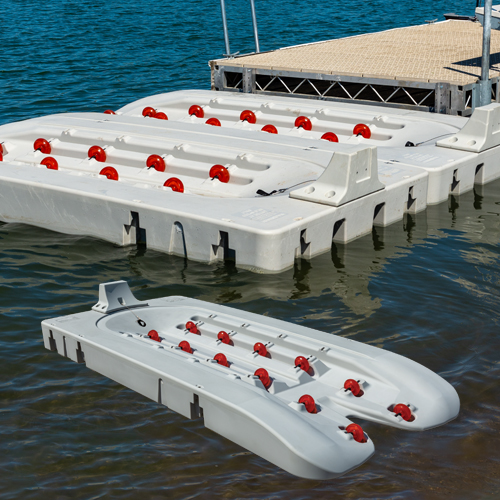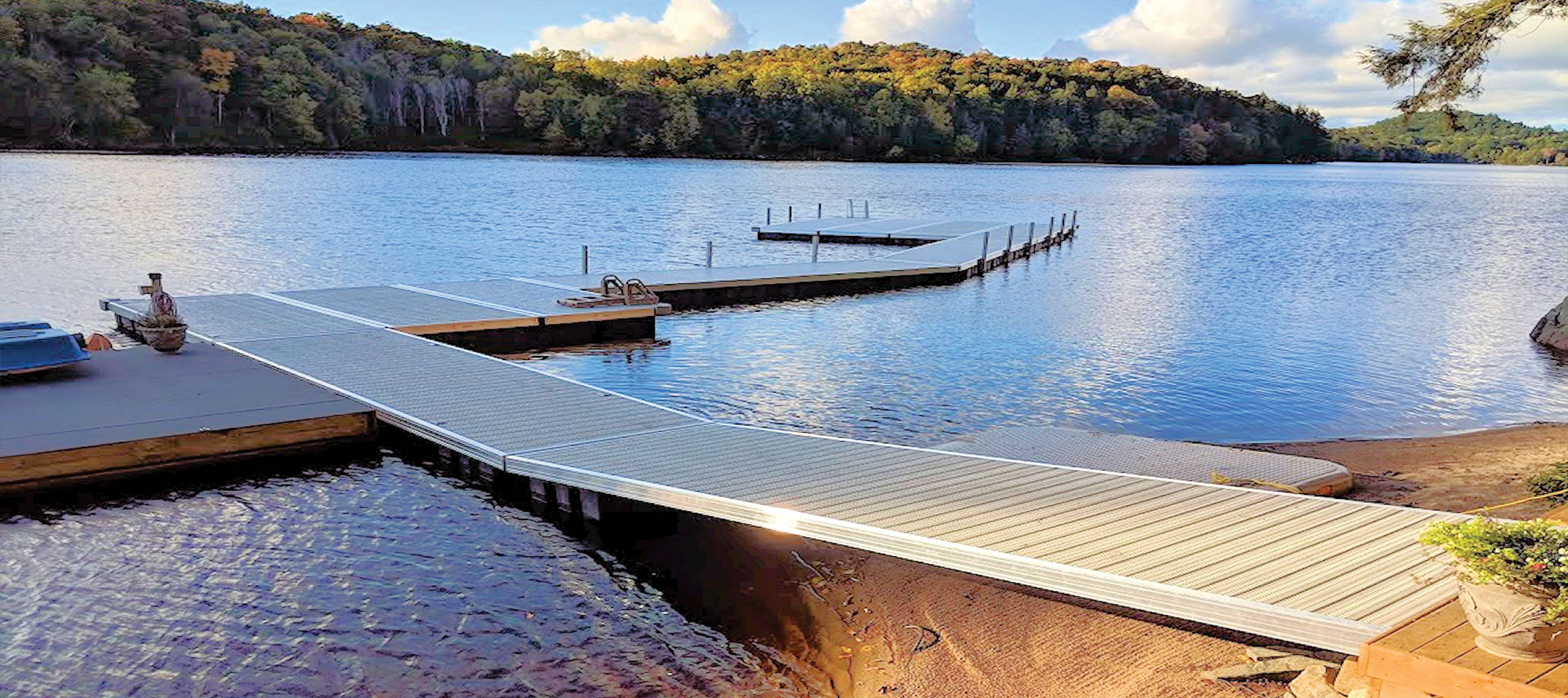Ingenious Floating Docks: The Future of Waterside Access and Recreation
Ingenious Floating Docks: The Future of Waterside Access and Recreation
Blog Article
Produce the Perfect Docking Solution With Floating Docks
Floating docks present a functional solution for a selection of maritime requirements, adjusting effortlessly to changing water levels and varied vessel types. As we discover the necessary aspects that contribute to the efficiency of floating docks, numerous crucial elements concerning security and maintenance will certainly emerge, elevating questions about just how to maximize your docking experience.

Benefits of Floating Docks
Floating docks offer numerous advantages that make them a suitable option for different maritime applications. Unlike taken care of docks, floating docks rise and autumn with the tide, making certain consistent access for vessels.
In addition, floating docks are commonly easier and quicker to mount contrasted to traditional set frameworks. Their modular design enables for straightforward setting up and disassembly, facilitating maintenance and relocation when required. This versatility is specifically beneficial for temporary applications or in atmospheres where conditions might change.
Floating docks likewise have a tendency to be more eco pleasant, as they reduce disturbance to the seabed and surrounding marine ecosystems. Their resilient nature decreases the threat of damages to marine life, advertising a healthier setting. These docks can be tailored to accommodate numerous vessel sizes, ensuring that they satisfy specific functional needs.
Ultimately, the mix of flexibility, ease of setup, and ecological factors to consider makes floating docks a highly effective option for a wide variety of maritime needs.
Choosing the Right Materials
Selecting the proper products for floating docks is critical to guarantee longevity, toughness, and security. The option of products straight influences the dock's performance in different ecological problems, consisting of direct exposure to water, sunlight, and potential wear from marine website traffic.
Common products utilized for floating docks consist of light weight aluminum, wood, and high-density polyethylene (HDPE) Light weight aluminum is light-weight, corrosion-resistant, and requires very little maintenance, making it an exceptional option for longevity. Nevertheless, its initial expense can be greater contrasted to various other products.
Wood, while aesthetically appealing and offering a traditional appearance, can be vulnerable to rot and bug damage if not properly dealt with. Using pressure-treated wood or normally resilient varieties like cedar or redwood can minimize these problems.
HDPE is a preferred selection as a result of its resistance to UV rays and chemicals, in addition to being environmentally friendly. floating docks. It is light-weight and offered in different colors, allowing for modification
Inevitably, the ideal product option will depend upon details requirements, consisting of spending plan, preferred aesthetics, and ecological factors to consider. Cautious evaluation of these variables will certainly cause a resistant and effective floating dock remedy.
Layout Considerations for Stability
When making floating docks, making certain stability is a fundamental element that can dramatically affect their capability and safety. Stability in floating dock design is affected by numerous aspects, including buoyancy, weight circulation, and the setup of elements. An optimal buoyancy system ought to make use of materials that supply enough lift while lessening weight. This equilibrium guarantees that the dock continues to be above water, even under varying lots.
Weight distribution is essential; evenly dispersing loads across the dock avoids tilting and boosts security. Bigger styles can offer increased stability, specifically in harsh water conditions, while longer docks may require additional assistances to avoid sagging.
An additional crucial consideration is the ecological effect, including wave action and wind. Incorporating features such as sidewalls or skirting can help alleviate the results of ecological pressures, preserving stability in adverse conditions. Ultimately, a mix of thoughtful design, material option, and understanding of ecological factors will certainly produce a floating dock that satisfies both stability and safety requirements.
Installation Tips and Strategies

Next, safeguard the necessary licenses and abide by neighborhood laws, which may determine setup techniques and environmental considerations. Involve a certified contractor experienced in floating dock installments if required. Usage high-quality materials designed for aquatic atmospheres to enhance toughness and durability.
When placing the dock, align it parallel to the shoreline to promote simple accessibility. Make certain that the anchoring system is durable, using concrete blocks or helical supports to stabilize the dock against wind and wave action. It's vital to represent seasonal water degree fluctuations, consisting of prospective ice activity in colder environments.
During the setup, confirm the dock's floatation and security before wrapping up the anchoring. On a regular basis check the installation for any type of signs of wear or damages. By complying with these strategies and tips, you can achieve a safe, practical, and aesthetically pleasing floating dock setup that fulfills your requirements.
Maintenance and Treatment Guidelines
Caring and preserving for floating docks is important to prolonging their life-span and guaranteeing risk-free use. Routine assessments ought to be performed to recognize any type of indications of wear, damages, or marine development. Seek splits, loose fittings, or blemished locations on the dock's surface area, as these problems can jeopardize structural integrity.
Cleansing is essential. Make use of a stress washing machine to eliminate algae, barnacles, and debris, which can gather in time. For stubborn growth, think about read more eco-friendly cleansing agents that will not harm water life.
In addition, check the mooring lines and anchors frequently to ensure they are secure and totally free from corrosion. Replace any type of frayed or damaged lines without delay to preserve security.
Throughout extreme weather condition, such as storms or freezing problems, take precautionary measures. Safeguard the dock with additional mooring lines and, if practical, remove any type of removable elements to prevent damage.
Conclusion
Finally, the execution of floating docks provides a efficient and versatile check it out docking service appropriate for various maritime applications. Their flexibility to rising and fall water levels, combined with a modular style, permits for easy personalization and relocation. Selecting ideal products improves both toughness and visual allure, while cautious consideration of security ensures safety and security and durability. With proper installation and regular upkeep, floating docks can give efficient and trustworthy docking experiences for a vast array of vessels.
As we check out the crucial components that contribute to the effectiveness of floating docks, several essential elements pertaining to security and maintenance will certainly arise, increasing questions concerning how to optimize your docking experience. Unlike repaired docks, floating site docks rise and fall with the trend, making certain consistent accessibility for vessels.When making floating docks, making sure stability is an essential facet that can considerably impact their capability and security. Security in floating dock design is influenced by numerous factors, consisting of buoyancy, weight distribution, and the setup of components. Inevitably, a combination of thoughtful layout, product selection, and understanding of environmental factors will produce a drifting dock that satisfies both security and safety and security requirements.
Report this page